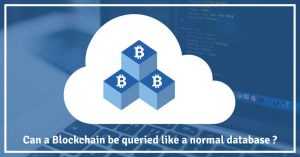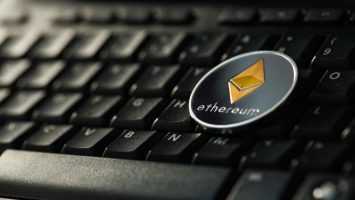The blockchain is a shared distributed database for point-to-point transactions. The core of the technology is Bitcoin, a digital encrypted  wallet used to control transaction and payment systems, launched in 2009. The transaction management system is decentralized and usually does not require any middleman. These transactions are supported by a set of network nodes and are recorded in a public ledger called a blockchain.
wallet used to control transaction and payment systems, launched in 2009. The transaction management system is decentralized and usually does not require any middleman. These transactions are supported by a set of network nodes and are recorded in a public ledger called a blockchain.
Internet of Things (IoT) is a networked physical network of interconnected computing devices, digital objects, and individuals with unique system IDs. The goal of the Internet of Things field is to achieve a single point of integration and data transmission online without human or computer interference.
How to invest in Blockchain
There is a complex relationship between blockchain and the Internet of Things. Internet of Things offering commercial entities may use blockchain technology stocks to find solutions. The federated system can develop and record password-protected data sets. If such databases and records are highly secure and protected by malware, such databases and records can be prevented from being stolen. The two can establish transparency and accountability while adjusting business development mechanisms. The blockchain itself helps reduce workplace mismanagement, management overhead, and business unpredictability through its interconnected servers. Digital ledgers can develop a cost-effective business and management system in which they can be effectively exchanged and monitored and tracked correctly. This process eliminates the need for a central management system, which fundamentally eliminates many bureaucratic and cultural sections and simplifies business processes. This innovative commercial application is providing an immersive platform for the Internet of Things and commercial enterprises.
The blockchain essentially gives Internet of Things devices the ability to participate in secure data exchange. Companies and business entities can use blockchains to manage and process data from edge devices, such as RFID-based assets (radio frequency identification), machine-readable bar codes and two-dimensional codes, infrared blisters (IR Bluster) or device information. If integrated into business settings, IoT edge devices will be able to transfer blockchain records to update contracts or verify communication networks. For example, if IoT enabled and RFID tagged assets with sensitive geolocation and confidential information are moved to another unspecified point, this information will be automatically stored and updated on the blockchain ledger and taken as necessary during system assignment Action. High performance blockchain as the product evolves to different locations; the system allows stakeholders to obtain the status of the package. In order to experience the results of the IoT framework enabled by blockchains, business organizations need to undertake four basic principles:
Cost Reduction
Edge devices need to reduce operational processing time and eliminate IoT gateways or Internet intermediaries within the system. Since data sharing and information are transmitted within the system, elimination of additional protocols, programs, hardware, channels, nodes, or communications can reduce overhead costs.
Accelerated data exchange
Support for blockchain IoT eliminates the need for IoT gateways or any filtering devices needed to establish networks between cloud, administrators, sensors, and devices. Deporting such “middlemen” can achieve peer-to-peer contracts and data sharing. In this process, the digital ledger eliminates the extra time required to synchronize devices and process and gather information. However, eliminating the IoT gateway will provide a channel for malware and security breaches. A blockchain-enabled IoT network can solve it by installing features such as malware detection and encryption engines.
Trust Construction
Implementing the Internet of Things space through blockchains, devices and devices can act as trusted parties for physical and physical transactions and communications. Unlike traditional businesses where transactions need to be recognized and verified, blockchains do not require any central authentication or peer recommendation. As long as the network is secure and the trusted parties are technically proficient, IoT space does not require additional documentation. What is blockchain technology, for example, team A may not know team Band may not actually meet or trust to meet, but the online transaction and the stamping of information sharing in the blockchain ledger confirm the credibility of the business? This allows individuals, organizations, and devices to gain mutual trust, which is crucial for establishing a recurring business setup and eliminating management confusion.
Strengthening Internet of Things Security
Blockchains provide space for decentralized networks and technologies that promise to store, process, and retrieve information from billions of connected devices. This system must provide a strictly protected network that is both encrypted and easy to use. Decentralized networks must provide high throughput, licensing, low latency, and inquiries. Installing a blockchain in an IoT network allows for the regulation and regulation of data exchanges through edge devices while maintaining the same secure transaction and information exchange for connected devices.
Eliminating points of failure in IoT space
IoT supporting blockchain by tracking the movement of tagged items at various points in an import store or warehouse, the supply chain network can be upgraded while authorizing security and Accurate product delivery. Blockchain installations provide accurately detailed product verification and reliable tracking of supply chain related data. Blockchain penny stocks the Internet of Things can verify the physical confirmation of each product by providing a virtual “visa” of relevant information (such as the authenticity and origin of the product) instead of looking for a paper path to identify the country of origin (COO). The blockchain can also make auditable records of products and help organizations trace or generate historical records. It can also provide secure access to data networks for managing records or alternative plans. The IoT supporting blockchain is not limited to enterprise failures or use cases. Any business entity with an IoT space can increase business productivity by realizing process innovation, marginalizing costs, eliminating system bottlenecks, extra cycles, and single points of failure.



Comments (No)